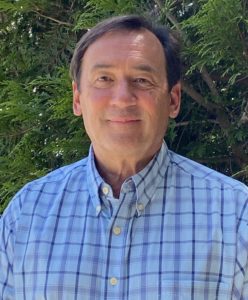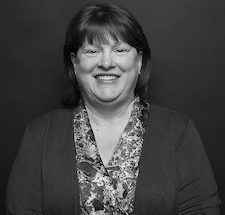In the preface to their new study measuring transportation security, University of Michigan researchers Alix Gould-Werth and Alexandra Murphy write: “Reliable access to transportation is essential to holding a job, grocery shopping, and getting to school, child care, social services, and other activities. Transportation insecurity — the experience of being unable to move from place to place in a safe or timely manner — has important consequences for people’s ability to connect to opportunity and flourish.” The study estimates that one in four American adults experiences transportation insecurity: a figure that helps explain the growing demand for alternate modes of transportation, from ridesharing to bicycling and other forms of active transportation.
This month, CUSA spoke with Bruce Forbes and Ame Sanders of Circles Upstate South Carolina. These deeply rooted Greenville residents found an innovative solution to their region’s lack of transportation access…a solution they’re betting Circles chapters and Big View teams across the U.S. can use to build transportation pathways in their own communities.
Part One of our two-part blog series describes how Bruce and Ame’s early involvement with Circles USA led them to identify their region’s pressing transportation needs as a major Big View opportunity.
+++

Bruce Forbes, who works at Greenville’s SHARE (Sunbelt Human Advancement Resources, Inc.) nonprofit community action agency, connected SHARE with Circles USA after hearing testimonials from his local Methodist church in 2014. Within a year, he says, “we had our very first Circles site and Circles group. And right now we’re in the middle of our fourth group.”
He describes CUSA and SHARE as natural partners for community change: “[SHARE’s] mission is to help end poverty and help those in poverty escape poverty, so it made for a really good match. We loved the idea of having volunteers being a part of the solution, and helping folks increase their social capital.”

In 2018, Ame Sanders joined the Greenville chapter as an Ally. That relationship, Ame says, laid the foundation for important work to come. “I’m still an Ally—still actively involved in the life of the [Circle] Leader I was working with in 2018. As a matter of fact, I had her over for dinner last night! We still meet regularly and I still help her with her goals.
“Along the way,” she continues, “Bruce had an employee who persuaded me to sign on to help with the Big View work. That is very interesting and appealing to me. The topic we wanted to look at is transportation. I happen to come from a manufacturing and automotive background, so I had a little bit of experience. So I have now focused my time with Circles on the Big View.”
|
– Ame Sanders, Big View Chair, Circles Upstate SC |
Bruce describes the transportation situation in South Carolina’s upstate region—”10 or 13 counties, depending on what metric you want to use”—as unevenly distributed to the needs of a growing industrial commuter workforce. “There are probably a million folks in the surrounding environments. There’s a lot of rural areas. And then you’ve got Greenville, Spartanburg, and Anderson—the three larger cities in the area. There’s a lot of manufacturing in the upstate: BMW, Michelin, and many others landed here over 20 years ago. And many other smaller companies which provide products for those larger companies have all grown up around here, too. So, you really need a car in order to get around. There is minimal public transportation in most of these communities.”
The chapters’ overarching goal became finding a way to get underserved rural and urban residents to work. “A good-paying job is one of the best ways to exit poverty,” Bruce says. “And we first wanted to make sure that our Circles group supported the existing bus system here in Greenville. It doesn’t get to all the places where the jobs are, and it doesn’t run all the times that it needs to run. Still, we wanted to support efforts in the community to increase the funding.”
He describes an Ally-led letter writing campaign to Greenville city and county council members in support of the city’s Greenlink bus system as a turning point for the Upstate SC chapter. “We all participated. And we had a good kind of taste in our mouth that, yeah, the funding went through! It wasn’t just because of our efforts…but we were part of that, and it felt good.”
Galvanized by this success, Bruce and Ame’s early hope soon bloomed into determination. Together they began to brainstorm larger-scale solutions to the region’s pressing transportation needs.
“Oh my gosh, we had some long days,” Ame remembers, “and we talked about all kinds of solutions. But we needed something that was sustainable—something that it was reasonable for our little team to take on.”
Bruce and Ame wondered: If the Greenlink bus system wouldn’t sufficiently expand, and if individual carpooling wasn’t enough to address transportation deficits, where was an option that was both scalable and affordable?
“We started researching other ways that people actually got to work,” says Bruce. “And Ame, being the awesome person she is, came across vanpools.”
|
– Ame Sanders, Big View Chair, Circles Upstate SC |
+++
In Part Two of our series, Bruce and Ame discuss the challenges and successes of their vanpooling program, which has expanded transportation and job pathways in their Upstate SC region.